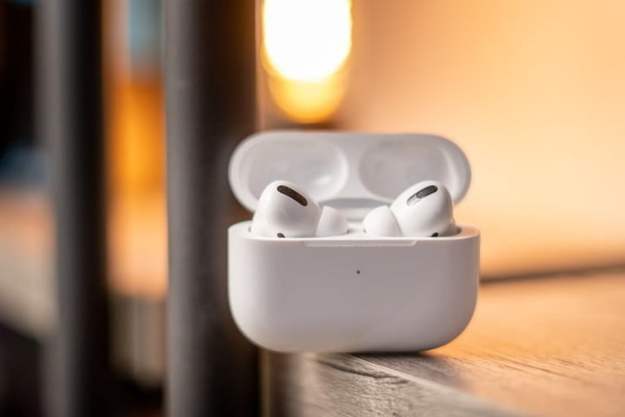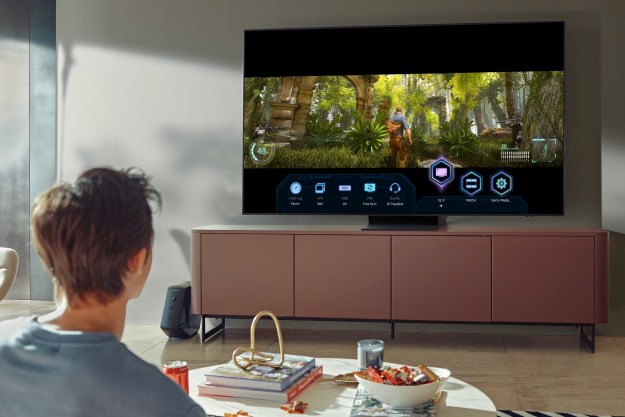
As an audio reviewer (and avid music fan), I’m always on the hunt for ultra-accurate sound. That’s why I’m a big fan of planar magnetic headphones, like Audeze’s Sine headphones or Oppo’s PM-3, which use fancy, expensive drivers and other internal components for incredible precision that more accurately re-creates what engineers hear in the studio.
But what if any pair of headphones could offer studio-level accuracy with the flip of a switch? That’s the promise (and potential) of a revolutionary audio technology from Sonarworks called True-Fi. We first tried True-Fi at CES 2018, and now we’re back for a full-on audition to see if the tech lives up to its potential.
How Sonarworks … works
Sonarworks is nothing new. In fact, as touted on the company’s website, Sonarworks’ sound-processing engine is already in use in more than 20,000 recording studios. That’s a staggering number, and it’s a good indication that there’s much more going on here than just digital smoke and mirrors.
Called Reference 4, Sonarworks’ studio application is designed to provide accurate, linear sound performance via digital processing so engineers can hear exactly what they’ve recorded. Reference 4 goes beyond that, too, allowing for the replication of other types of speakers, the removal of “sound coloration,” and other EQ applications, all latency-free so the pros can hear their mix in a variety of applicable settings.
Out of the studio, into your cans
For True-Fi , Sonarworks has transported its precious sound-processing tech into a nimble app for Mac and PC (it’s not yet available for mobile, though we’re told that’s coming). The company has also employed what it calls its “patented, industry-leading measurement technology” to map out the frequency response of more than 130 pairs of headphones, allowing the software to make up for each pair’s distinct variations across the audible sound spectrum.
Sonarworks’ True-Fi tech aims to account for these dips and spikes, flattening them out so that the sound you hear is more accurately reproduced.
For the uninitiated, the term “frequency response” when referring to a speaker or pair of headphones is essentially a measurement that gauges how each device transfers (or transduces) electrical sound from a source device into sound waves. Every pair of
If, for instance, a pair of headphones reproduces a massive punch of bass in a song that may otherwise not sound so bassy, you can bet the frequency response for those
The question is: Does it really work?
Sonarworks in action
We’d love to tell you that True-Fi will turn any pair of headphones into a crystalline pair of cans fit for studio applications. Unfortunately, that’s not quite the case. What the system will do, though, is offer impressive correction for a pair of headphones’ most egregious anomalies with almost magical ease, and to sometimes absolutely thrilling results. It can also add a touch of EQ to personalize the experience and adjust for your own taste, just for good measure.
We employed True-Fi across three very different sets of headphones, as well as used the tech wirelessly, with an outboard headphone amp (in this case, Klipsch’s Heritage series amp), and without. The results below apply to all cases, but, simply due to the inherent crappiness of the sound coming out of most computers, those without a dedicated amp may benefit the most.
Oppo PM-3

The first test case was our trusty Oppo PM-3. Regardless of the planar magnetic drivers referenced above, the PM-3 have a relatively dark flavor to their sound, especially in the lower midrange. The True-Fi tech instantly corrected that “darkness,” though it wasn’t clear right away why there was more powerful (if very firm) bass response.
It may depend on personal preference as to which is actually “better.”
It turns out the application, which was personalized by a few random pieces of information I entered (including the fact that I’m a male, and of a certain age not disclosed here), was adding the boom. Clicking on the Personalization window revealed a bass bump of about +3dB, and about the same in the treble. I preferred the flatter sound and turned off both. What I then encountered was a sound that’s brighter and more open than the PM-3 alone.
That was especially evident in the upper midrange and treble, where the openness of the sound when switching True-Fi off and on is something akin to blowing air into your closed fist, and then opening it. That was a mostly welcome opening, but it wasn’t always an improvement. For vocals like those of Decemberists’ frontman Colin Meloy, his strident voice was edgier than usual with True-Fi, and subjectively, also sounded a bit more intimate without it. Sound elsewhere was clearer and more open with True-Fi, but in this case, it may depend on personal preference as to which is actually “better.”
Apple EarPods

Next up, I decided to go the exact opposite way with the operative cheapskate cans in Apple’s EarPods. Here’s where the mystification of turning a not-so-great pair of headphones into studio-class cans was slightly, well, demystified. To be fair, Sonarworks never promised this, but one can dream, right? With True-Fi on or off, the EarPods still sound limited, especially when it comes to clarity and detail in the higher frequencies. In other words, processing can only do so much.
That said, those who have cursed their freebie buds for a lack of bass response should take note here. True-Fi reveals the measured frequency response for each pair you add, and I was actually amazed by how heavily the EarPods are rolled off in the bass register — we’re talking a massive nosedive just below 100Hz. And while True-Fi obviously can’t add frequencies the EarPods can’t reproduce, I was thoroughly impressed by how much beefier and more powerful the bass response is with True-Fi on. The midrange is also a bit clearer, too, though it’s not going to make you stand up and salute.
V-Moda Crossfade II Wireless

We hit the Goldilocks Zone with this pair, as True-Fi really showed its mettle here in fine fashion. While we quite enjoyed the V-Moda Crossfade Wireless’ second coming when it arrived, the bass response — especially the upper and midbass — was occasionally a bit too strong and overpowering for our taste. True-Fi fixed that up instantly, clearing out the overriding boost, flattening the mids, and clarifying the entire sound signal for incredible detail. This was true both in wired and wireless playback.
We were able to add some boost down low if and when we wanted, but with True-Fi engaged, the bass was immediately and instantly kept in check, while still sounding full and authoritative. This allowed the headphones to really come into their own, with more balance, more clarity, and better fidelity across the board. And best of all, True-Fi did all this with virtually no audible processing.
Conclusion
True-Fi may not be a miracle worker when it comes to modifying your lowliest headphones, but it is a great remedy for mid-level
True-Fi isn’t a replacement for investing in top-notch cans, and moreover, if you’re in love with the sound signature of your pricey headphones, True-Fi will do its best to eliminate some of the idiosyncrasies that brought you to them in the first place. Still, it’s a very cool tool to soup up your entire headphone collection that’s especially awesome for budding sound engineers or anyone who likes to dabble in sound correction.
Best of all, True-Fi offers a free trial so you can hear it for yourself and see if it’s right for you.
Editors' Recommendations
- No jack, no buds: Apple is killing the iPhone’s EarPods and we’re good with that
- AirPods Pro are out of stock at major retailers. Here’s how to find them today


